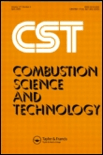
COMBUSTION SCIENCE AND TECHNOLOGY
Scope & Guideline
Pioneering the Future of Energy and Combustion
Introduction
Aims and Scopes
- Combustion Kinetics:
The journal publishes studies on the mechanisms and rates of combustion reactions, including detailed kinetic models and experimental investigations that elucidate the underlying chemical processes. - Emission Studies:
Research on the formation and reduction of pollutants such as NOx, CO, and particulate matter during combustion processes, with a focus on developing strategies for cleaner combustion technologies. - Fire Dynamics and Safety:
Papers addressing the behavior of flames, smoke, and heat release in various environments, including the impact of ventilation and materials on fire spread and smoke toxicity. - Innovative Combustion Technologies:
Exploration of new combustion technologies, including alternative fuels, advanced burner designs, and combustion enhancement techniques aimed at improving efficiency and reducing environmental impact. - Numerical and Experimental Methods:
The journal features research employing computational fluid dynamics (CFD), machine learning, and experimental methodologies to study combustion phenomena and optimize combustion systems. - Spontaneous Combustion and Fire Prevention:
Studies focused on the mechanisms, risks, and prevention strategies associated with spontaneous combustion, particularly in coal and biomass, as well as the development of effective fire retardants. - Thermal Decomposition and Pyrolysis:
Research on the thermal behavior of fuels and materials under various conditions, including pyrolysis kinetics and the production of valuable by-products from waste materials.
Trending and Emerging
- Sustainable and Alternative Fuels:
A significant increase in research dedicated to the combustion of sustainable and alternative fuels, including biomass, biogas, and hydrogen, highlighting the need for environmentally friendly energy sources. - Advanced Emission Control Technologies:
Emerging studies focus on innovative technologies and materials aimed at reducing emissions from combustion processes, driven by stricter environmental regulations and public health concerns. - Machine Learning and Data Analytics in Combustion:
The integration of machine learning and data-driven approaches in combustion research is rapidly growing, enabling more accurate modeling and optimization of combustion processes. - Fire Safety in Specific Environments:
There is an increasing emphasis on fire safety and combustion phenomena in unique environments, such as underground mining, historical buildings, and urban settings, indicating a broader application of combustion science. - Interdisciplinary Approaches in Combustion Research:
Research increasingly incorporates interdisciplinary methods, combining insights from materials science, thermodynamics, and environmental science to tackle complex combustion challenges.
Declining or Waning
- Traditional Fossil Fuel Combustion:
There is a noticeable decrease in studies focused solely on traditional fossil fuel combustion processes, as research increasingly shifts towards alternative fuels and cleaner combustion technologies. - Low-temperature Combustion Studies:
Research on low-temperature combustion, while still relevant, has seen a reduction in focus compared to the growing interest in high-efficiency and high-temperature combustion technologies. - Basic Combustion Phenomena:
The exploration of fundamental combustion phenomena, such as simple flame structures and basic flame dynamics, appears to be receiving less attention in favor of more complex systems and applications. - Conventional Fire Safety Approaches:
There is a declining emphasis on conventional fire safety measures, as modern research trends towards innovative technologies and materials for fire prevention and suppression.
Similar Journals
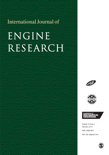
International Journal of Engine Research
Driving Excellence in Engineering DisciplinesWelcome to the International Journal of Engine Research, an esteemed publication dedicated to advancing the fields of Aerospace Engineering, Automotive Engineering, Mechanical Engineering, and Ocean Engineering. Published by SAGE Publications Ltd and based in the United Kingdom, this journal has earned a prestigious reputation, consistently ranking in the Q1 quartile in several engineering categories as of 2023. The journal's impact is evident through its high Scopus rankings, positioning it within the top 25% of global research in Aerospace and Automotive engineering, and within the top 20% for Mechanical engineering. With a commitment to publishing rigorous, peer-reviewed research from 2000 to 2024, the International Journal of Engine Research plays a vital role in fostering innovation and collaboration within the engineering community. Although this journal does not offer open access, it remains a critical resource for researchers, industry professionals, and students striving to deepen their understanding in these dynamic fields.
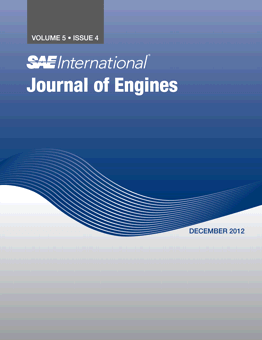
SAE International Journal of Engines
Pioneering Research in Automotive ExcellenceSAE International Journal of Engines, published by SAE International, serves as a leading platform in the field of automotive engineering and fuel technology. Established in 2008, this journal has quickly gained recognition, achieving a Q2 ranking in Automotive Engineering and a Q3 ranking in Fuel Technology as of 2023. With the journal's ongoing commitment to advancing the understanding of engine technologies, it encompasses a diverse range of topics including engine performance, emissions, fuels, and innovative technologies driving the automotive industry. Researchers and professionals can benefit from the high-quality peer-reviewed articles that the journal features, while the comprehensive content serves as an invaluable resource for students engaged in automotive studies. Although it does not currently offer open access, the journal's credibility is further reinforced by its respectable Scopus rankings, indicating its significant impact within the academic community. For anyone seeking to stay at the forefront of engine research and automotive advancements, the SAE International Journal of Engines is an essential resource.
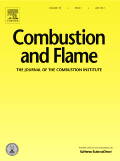
Combustion and Flame
Transforming Insights into Combustion TechnologiesCombustion and Flame is a premier academic journal published by Elsevier Science Inc, dedicated to advancing the field of combustion science. Since its inception in 1957, this journal has consistently provided a platform for rigorous research and groundbreaking discoveries in the realms of Chemical Engineering, Chemistry, and Energy Engineering, illustrating a significant Q1 ranking across multiple categories, including Fuel Technology and Physics. With an impressive Scopus ranking, comprising the top 10% in fields such as General Physics and Astronomy, and General Chemical Engineering, Combustion and Flame serves as a critical resource for researchers, professionals, and students aiming to explore the complexities of combustion phenomena and their applications. Although it does not offer open access, the journal is known for its comprehensive articles and innovative research papers, fostering scholarly dialogue and the development of emerging technologies. The journal aims to connect researchers globally, ensuring that important findings are shared and disseminated effectively.
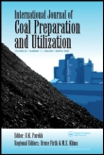
International Journal of Coal Preparation and Utilization
Advancing sustainable energy solutions through coal research.The International Journal of Coal Preparation and Utilization, published by Taylor & Francis Inc, serves as a pivotal platform dedicated to advancing research and knowledge in the fields of coal preparation and utilization. Since its inception in 1999, the journal has maintained a strong commitment to facilitating scholarly discourse among professionals and researchers engaged in coal technology, energy engineering, and environmental concerns. With a solid reputation reflected in its Q2 quartile rankings across multiple categories including Chemical Engineering, Energy Engineering and Power Technology, and Geotechnical Engineering, this journal continues to make significant contributions to the understanding and application of coal and its related technologies. The journal provides both subscription and open access options, ensuring wide accessibility to its rich repository of peer-reviewed articles. As the industry evolves, the International Journal of Coal Preparation and Utilization remains vital for stakeholders interested in the innovative practices that promote sustainable energy solutions.

COMBUSTION EXPLOSION AND SHOCK WAVES
Pioneering Research at the Intersection of Energy and EngineeringCOMBUSTION EXPLOSION AND SHOCK WAVES, published by MAIK NAUKA/INTERPERIODICA/SPRINGER, is a peer-reviewed journal that has been a cornerstone in the fields of combustion science and shock wave dynamics since its inception in 1965. With a broad scope encompassing chemical engineering, energy technology, and physics, this journal plays a pivotal role in disseminating groundbreaking research that drives advancements in both theory and application. Despite its classification in the third quartile across several categories as of 2023, the journal continues to attract contributions that address critical challenges and innovations in combustion-related phenomena. Researchers and professionals across multiple disciplines are encouraged to submit their findings, as the journal provides a valuable platform for sharing knowledge and fostering collaboration. The editorial board is committed to maintaining high standards of quality and relevance, which is reflected in its ongoing influence in these interdisciplinary and rapidly evolving fields. While the journal is not open access, it offers a wealth of insights and scholarly work that is vital for both academic inquiry and practical applications. From the vibrant heart of New York City, COMBUSTION EXPLOSION AND SHOCK WAVES aims to inspire and inform, serving as an essential resource for those dedicated to understanding and innovating in the realm of combustion science.

SAE International Journal of Fuels and Lubricants
Transforming Insights into Industry PracticesWelcome to the SAE International Journal of Fuels and Lubricants, a leading peer-reviewed publication dedicated to advancing knowledge in the crucial fields of fuel technology and lubrication science. Published by SAE International, this journal serves as a vital resource for researchers, industry professionals, and students engaged in the study and application of innovative fuels and lubricants. With an impact factor indicative of its importance, the journal is ranked in the Q3 category for both Fuel Technology and Pollution, highlighting its critical role in addressing global energy and environmental challenges. Covering a range of topics from fundamental research to practical applications, the journal not only contributes to academic discourse but also serves to inform industry practices. Our publication spans the converged years from 2009 to 2024, reflecting a commitment to continuous scholarly contribution. While currently operating under a traditional access model, the journal aims to foster an inclusive environment for discourse in the rapidly evolving fields of energy and environmental science.

Applications in Energy and Combustion Science
Transforming Research into Real-World Energy ApplicationsWelcome to Applications in Energy and Combustion Science, a premier open-access journal published by ELSEVIER that has been at the forefront of research since 2020. With the ISSN 2666-352X, this journal is dedicated to advancing the knowledge and application of energy technologies and combustion systems, reflecting a strong commitment to the evolving demands of the field. Based in the United Kingdom and recognized for its robust contributions, it has achieved noteworthy status in the 2023 rankings: a Q1 classification in both Chemical Engineering (miscellaneous) and Fuel Technology, alongside a Q2 standing in Energy (miscellaneous). Researchers will find it a significant platform, with Scopus rankings placing it among the top tiers in various categories. This journal offers an essential resource for professionals and students aiming to stay abreast of innovative developments and applications in the critical areas of energy and combustion, ensuring broad accessibility and dissemination of research findings.

PROCEEDINGS OF THE COMBUSTION INSTITUTE
Advancing Research in Combustion DynamicsPROCEEDINGS OF THE COMBUSTION INSTITUTE, published by Elsevier Science Inc, is a premier platform for dissemination of advanced research in the fields of combustion science, engineering, and related technologies. With an ISSN of 1540-7489 and an E-ISSN of 1873-2704, this journal holds a prestigious position within the academic community, as evidenced by its top-tier Q1 rankings in Chemical Engineering, Mechanical Engineering, and Physical and Theoretical Chemistry for 2023. The journal is recognized for its rigorous peer-review process and aims to publish high-quality, impactful research that drives innovation and knowledge in combustion phenomena. Researchers and professionals can engage with cutting-edge findings that address critical challenges and explore novel solutions in this vital area of study. Although it does not offer open access, its subscription model ensures wide accessibility to institutions and experts seeking profound insights into combustion dynamics.

International Journal of Spray and Combustion Dynamics
Bridging Theory and Application in Combustion ScienceWelcome to the International Journal of Spray and Combustion Dynamics, a premier publication dedicated to advancing the understanding of spray and combustion phenomena in various applications. Published by SAGE Publications Inc, this journal serves as a vital resource for researchers and professionals in the fields of Automotive Engineering, Energy Engineering, and Physics, boasting a commendable Q2 ranking in its categories for 2023. With an ISSN of 1756-8277 and E-ISSN 1756-8285, it engages a global audience in the investigation of innovative solutions to energy efficiency and combustion processes. Operating from the United Kingdom, this journal is a key player in disseminating high-quality research findings from 2011 to 2024, making it a go-to source for those seeking to enhance their knowledge and contribute to cutting-edge developments in these dynamic areas of study. Researchers, practitioners, and students alike will find this journal invaluable for staying informed and connected to the latest advancements in spray and combustion dynamics.

ISI Bilimi ve Teknigi Dergisi-Journal of Thermal Science and Technology
Exploring the Frontiers of Thermal Science and TechnologyISI Bilimi ve Teknigi Dergisi-Journal of Thermal Science and Technology, published by the Turkish Society of Thermal Sciences and Technology, serves as a pivotal platform for disseminating cutting-edge research in the fields of thermal science, engineering, and materials science. With an ISSN of 1300-3615, this journal not only addresses critical advancements from 2008 to 2013 and 2015 to 2023, but also operates under the auspices of rigorous peer review, contributing to its reputable standing in academia. As a Q4 ranked journal in various disciplines including Atomic and Molecular Physics, Engineering, and Materials Science, it offers researchers and professionals essential insights, though it does not currently operate under an open access model. Situated in Ankara, Turkey, this journal is key to fostering collaboration and innovation among scholars, making it an indispensable resource for students and professionals eager to engage with the latest thermal science methodologies and technologies.